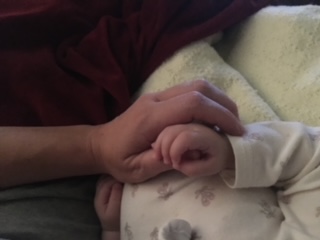“Normal” Developmental Milestones for Your Child/ Part 1: Reflexes

Ok, so you just had the craziest time of your life pushing a living being out of your you-know-what and now you are suddenly madly in love with that tiny, screaming, adorable, bundle of joy. But now what? What are all these developmental milestones people are talking about and what do you need to be doing to make sure your baby is reaching them appropriately?
Answer: sit back, relax, and enjoy the ride. ‘Huh? Is this doctor nuts? That’s not very useful…’ you might be saying. Well, think about this: your baby grew in your belly without you rushing him or her along. Even if you had wanted your baby to be born at say, five months fully developed, your body had a different plan. It takes approximately nine months to “grow” a baby in the womb- for some women a little less, some a little more. And if it’s a natural, healthy birth, the body will go into labor when the baby is ready to be born: no sooner, no later.

Just like there are these “guidelines” for a normal pregnancy (approximately nine months), there are guidelines for your baby’s developmental milestones but please remember that each child is different and will develop at a different rate! Most importantly remember this: the outward representations of these milestones (i.e. baby lifting his head, grasping your finger, taking his first step) are each just a small tip of the iceberg; underneath the surface your baby’s neurology is constantly changing and developing. When the display of primitive reflexes are not properly integrated neurologically or when a child’s “pushed” to reach a milestone sooner than his body is ready for, it is the brain and the rest of the central nervous system that will suffer the consequences. This could lead to endless developmental and behavior issues later on, along with an unknown number of potential other health problems.
Primitive reflexes are reflex actions originating in the central nervous system (brain stem more specifically) that are exhibited in infancy but the display of them are neurologically integrated as a child grows. Most of them should no longer be present as the frontal cortex fully develops in a child.
Listed below are the main primitive/survivalist reflexes present in a newborn:
- Rooting Reflex-when an infant’s cheek is stroked he will turn towards the stimulation and open his mouth in preparation to nurse
- Moro (startle) Reflex-when holding him on his back and quickly make as if to drop him, his limbs will shoot out and he will arch his back then pull into the fetal position
- Suckling Reflex- he will lower his tongue to create a vacuum if something enters his mouth
- Grasping Reflex- until about eight weeks, if you put anything into his hand he will grasp it tightly
Why is this information useful to new parents? Education is empowerment. The more you know, the better informed decisions you can make when it comes to your child’s health.
Did you know that pediatric chiropractors can potentially help children that are either having trouble demonstrating or integrating these reflexes (retained neonatal reflexes)?
Check out the following website for more on Retained Neonatal Reflexes: http://www.retainedneonatalreflexes.com.au/
So quick recap: 1) Children are all different (shocker! I know)- their development will be different and shouldn’t be rushed-I will touch more on the neurological importance of this in the following blog. 2) Integration of the display of primitive reflexes is essential for proper neurological development. 3) A trained chiropractor, especially a pediatric chiro (and more specifically someone with training in Retained Neonatal Reflexes) can assess your child to see if chiropractic care would help support his/her growing nervous system.
About The Author
Dr Madison
Related Posts
Normalize Bed-Sharing
Our second daughter was born at home. From her very first night until she decided…
March 24, 2021TOP THREE SUPPLEMENTS FOR KIDS- When, Which Ones, and Why
Should you be giving your young children supplements? This is a question that often comes…
October 7, 2020
